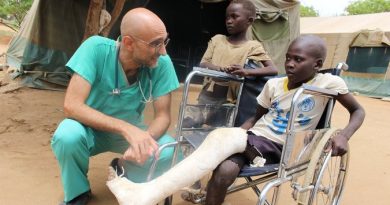Focus on Art and Global Issues: Refugees
By Nicholas Elden
Staff Writer
The United Nations High Commissioner on Refugees (UNHCR) reports that the number of displaced people is at its highest, surpassing even post-World War II numbers. At the end of 2015, more than 65.3 million people, one out of every 113 people on Earth, sought asylum. Conflicts in Syria, Burundi, Afghanistan, and Somalia have uprooted families and left them without access to education, food, or shelter as they fight to find safety and tell their stories. The initiative to find a platform of expressing the refugee’s struggles is now told through artistic outlets around the world.
The Refugee Art Project is one of many platforms that reaches out to the rest of the world and highlights the struggle of displaced individuals. This program was conceived by a collection of academics and artists united by a concern for the plight of asylum-seekers and refugees who travel to Australia and subsequently locked in detention centers.
Art exhibitions and zine publications are formed by a diverse mixture of men, women, and children who are escaping conflict from around the globe. Paintings of lost homes and destruction along with written pieces describing the experiences these refugees endure stand out as some of the most powerful pieces. The art showcases a diverse range of styles and mediums that highlight the major themes of trauma, exile, hope, and endurance. The Refugee Art Project is intended to, “enable asylum seekers and refugees to communicate to the public in their own voice, through art, which creates a bridge between hem and the community.”
In Birmingham, England, memorial gardens resembling hidden funeral grounds in Syria stand to open a dialogue about the lost lives of refugees. Tania El Khoury, a feminist Arab performance artist, installed an interactive sound installation called Gardens Speak, an interactive garden containing the oral histories of ten men and women and presenting Syrians affected by the war buried in their backyards instead of gardens. The found audio of these individuals gives evidence of their final moments and stands as a global testament to the injustice that individuals face around the world from cruel and warring governments. El Khoury says, “Their stories remind us that what’s happening in Syria began as an uprising against a repressive regime by ordinary people dreaming of a different future.”
The Za’atari Project highlights the plight of civilians escaping the Syrian War seeking safety. This project in northern Jordan has quickly become the world’s second largest refugee camp with nearly 100,000 residents. While these individuals are away from their home, they create beautiful art in Za’atari’s harsh land of dust storms and bright sunlight. Mural-making and educational activities give voice to refugee children. For many of these children, the art initiative is the only organized educational program they have. The Project’s beautiful murals span across town buildings and feature both professional portraits of refugees and colorful murals sprawled out across the hot sand.
As more outlets open to express the growing international struggle of refugees, the world will gain a larger platform to talk about the issue and strategize how to return these individuals to their homes. Art has given a voice to these individuals and shown the world that while circumstances are bad, hope is not lost. With refugee numbers growing every single day, art and literature help to capture the awe-inspiring plight of these individuals displaced from their homes.


